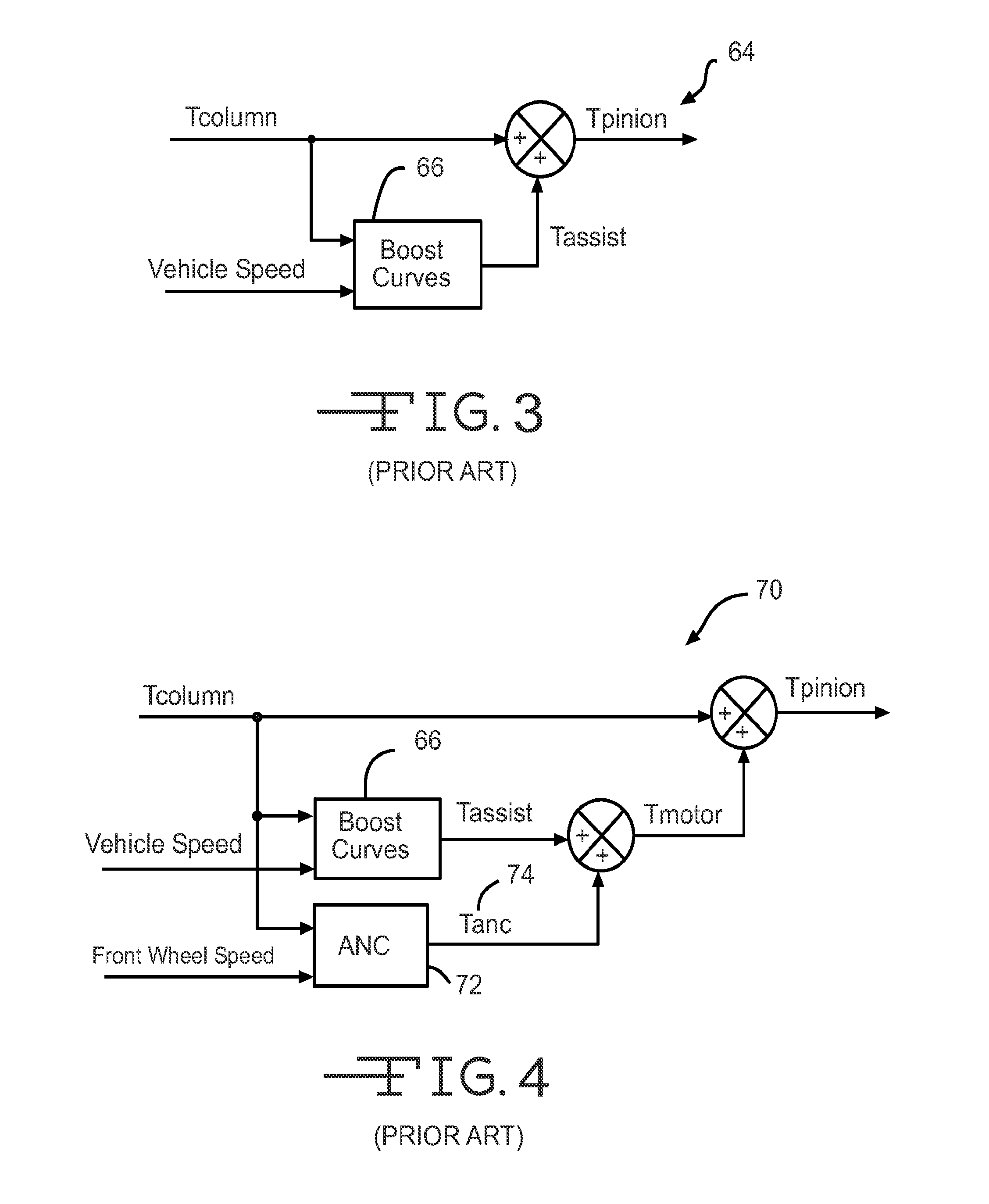System and Method for Wheel Disturbance Order Detection and Correction
a technology of disturbance order and system, applied in the direction of steering initiation, instruments, vessel construction, etc., can solve the problems of excitation of steering gear oscillation, variation of thickness of brake disk, and nibble of steering wheel, so as to enhance performance, eliminate nibble, and enhance performance
- Summary
- Abstract
- Description
- Claims
- Application Information
AI Technical Summary
Benefits of technology
Problems solved by technology
Method used
Image
Examples
Embodiment Construction
[0053]Because a resonator filter can potentially cause instability in the closed loop response of the steering system when the ANC gains are too large, this invention contemplates replacing the prior art resonator filter with an anti-notch filter that increases the gain margin and, therefore, provides greater disturbance rejection. The invention is illustrated in FIGS. 10 and 11, where components that are similar to components shown in FIGS. 4 and 5 have the same numerical identifiers. FIG. 10 illustrates a steering system 100 that includes the present invention, while FIG. 11 illustrates an Active Disturbance Rejection (ADR) control 102 that is included in the steering system 100 in lieu of the prior art ANC 72. As shown in FIG. 11, the prior art resonant filter 84 shown in FIG. 5 has been replaced by an anti-notch filter 104. Additionally, the front wheel frequency is supplied directly as an input to the ADR 102, thus eliminating the conversion of wheel speeds to frequency as was ...
PUM
 Login to View More
Login to View More Abstract
Description
Claims
Application Information
 Login to View More
Login to View More - R&D
- Intellectual Property
- Life Sciences
- Materials
- Tech Scout
- Unparalleled Data Quality
- Higher Quality Content
- 60% Fewer Hallucinations
Browse by: Latest US Patents, China's latest patents, Technical Efficacy Thesaurus, Application Domain, Technology Topic, Popular Technical Reports.
© 2025 PatSnap. All rights reserved.Legal|Privacy policy|Modern Slavery Act Transparency Statement|Sitemap|About US| Contact US: help@patsnap.com



